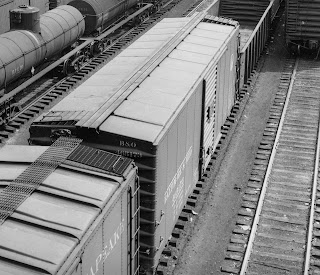At Prototype Rails last weekend, I took photos of several things that I found interesting (or thought others might too.) One car and load that caught the attention of me and Bob Heninger was Eric Thur's PRR F30A flat car with a nice Allis-Chalmers BZO-HV oil circuit breaker, shown above. I am always on the lookout for interesting loads. The notes accompanying Eric's model indicated that he had purchased it on ebay. A quick search using my iPhone (while I was standing in front of Eric's model) revealed the seller, whose id is multiscale_digital_llc. There are many interesting items in numerous scales (not just HO) that can be used for layout detailing or flat car loads.
Unfortunately, the item was out of stock. However, on my flight back to New York, I contacted the seller and received a prompt reply that more would be available within a few days. As promised, I received a message a couple days later and placed an order. The order comes with what you see above (meaning double what is on Eric's flat car model.)
 |
| Joliet, Illinois, June 29, 1958, Bruce K. Meyer photo |
Above is a diagram I have included as reference that I found via google on the site ElectricPartManuals.com.














































